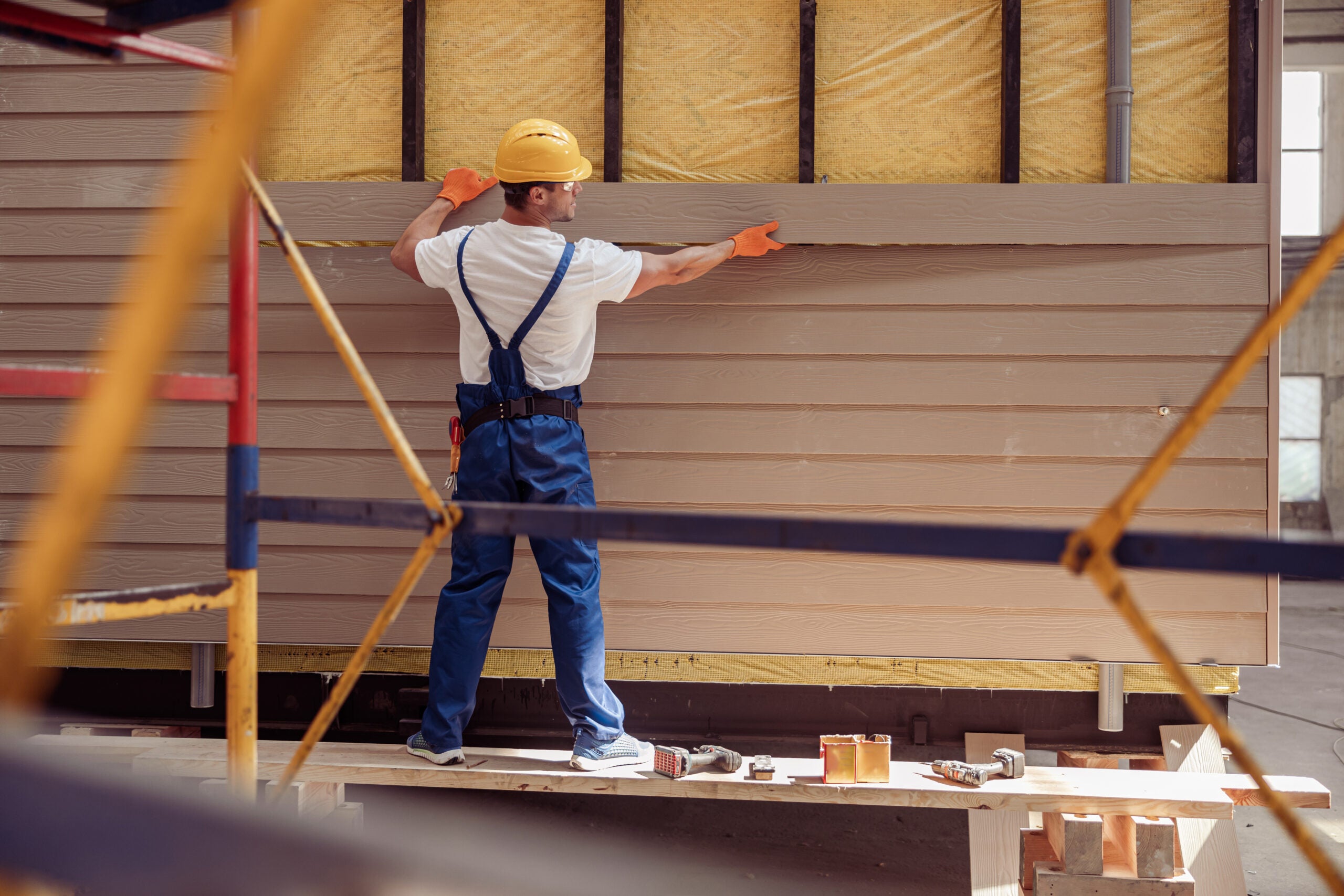|

|
|
|
|
How to Choose the Right Siding for Your Climate

When the owner of the house or the owners of the business start looking at external upgrades, the siding quickly becomes the top priority. Not only does siding defines your assets, but it also protects your investment from harsh weather conditions, moisture damage and energy loss. With a lot of siding material being available, it is only attractive to choose only on the basis of cost or appearance - but there is a factor that you should never ignore: your climate.
The best siding for a dry, sunny area cannot perform well in cold winter or moist coastal atmosphere. Choosing wrong material may lead to premature wear, expensive repair and decrease in property value. On the other hand, the correct siding-wheel will provide external vinyl siding, fiber cement, or engineer wood-stable security, low maintenance and long-term curb appeal.
If you want to make an informed decision (and avoid expensive mistakes), then there is a broad guide to choose siding that fit your climate.
Why Climate Plays a Huge Role in Siding Performance
The siding serves as the first line of defense against the weather. Each climate presents various challenges:
- Cold Climates: Extreme freezing cycles, ice and ice can cause certain materials to crack or absorb certain materials.
- Hot, Sunny Area: UV rays fade and taunt low quality siding.
- Humid or coastal areas: salt, moisture, and humidity encourages rot, mold and corrosion.
- Mixed climate: areas with both cold winter and hot summer require versatile, durable options.
Ignoring these factors often leads to siding which looks great first but fails prematurely. This is why a local siding company is a specialist of Calgary or wherever you live, always recommend considering the climate before anything.
Best Siding Options by Climate
1. Cold and Snowy Climates
For long winter and heavy snowy areas, siding must be resistant to cracking, swelling and absorption of moisture.
- Fiber cement siding: Opposes extremely durable, freeze-melting cycles, and is non-combustible. Its heavy weight makes it stable in high winds.
- Engineer Wood Siding: Designed for additional strength and treated to oppose better moisture than natural wood.
- External vinyl siding: When properly installed works well in cold climate. Look for high-grade vinyl with insulation banking to improve energy efficiency.
Pro Tip: In cities such as Calgary, where winters are difficult, a prestigious siding company combines untouched vinyl siding with proper installation from a prestigious siding company Calgary Homebuilder Trust, ensuring that your siding did not get taut under temperature swings.
2. Hot and sunny areas
Acute sunlight can damage siding over time due to the fading color, drying the material and war.
- Plaster siding: traditional plaster or modern EIF (external insulation and finish systems) hold well under the Sun.
- Fiber cement: Maintains color for a long time compared to many materials, especially when factory-paint is done.
- Vinyl siding with UV security: Today's outer vinyl siding comes with UV-resistant coatings that disappear and prevent war.
Pro tip: Light colored siding reflects heat better, which helps to keep the inner coolers in the warm climate.
3. Coastal or humid climate
High humidity, salty air, and persistent rain require siding with extraordinary moisture resistance.
- Aluminum siding: Glass resistant and great for coastal areas.
- Fiber cement: mold, mildew, and resistant to rot.
- Vinyl siding: A cost -effective option if it is installed to prevent high quality and professional infiltration.
Avoid: Natural wood siding, until you are constantly sealing and ready for maintenance.
4. Mixed or medium climate
In areas that see everything-snow, rain, air and sunshine-you want a versatile, low maintenance option.
- External vinyl siding: Cheap, durable, and perform well in most situations. The untouched vinyl helps improve energy efficiency.
- Engineer Wood: Traditional wood provides a natural look without high maintenance.
- Fiber Cement: A strong all-round option that works in almost any environment.
Pro Tip: If you are not sure what your local climate demands, talk to an expert from a siding company. For example, a siding company Calgary may recommend products suited to the unique combination of cold winter and warm summer.
Other Factors to Consider Beyond Climate
While climate should guide your primary decision, it is not the only factor. You also want to consider:
1. Energy Efficiency
Insulated siding, such as foam-backed exterior vinyl siding, reduces heat transfer and keeps energy bills lower. In colder regions, this can make a noticeable difference in comfort.
2. Maintenance
Some ingredients, such as natural wood, frequent sealing and painting are required. Others, such as vinyl or fiber cement, require slightly more than periodic washing.
3. Cost and Budget
Vinyl is usually suited to the most budget, while fiber cement and engineer wood fall into the medieval. Natural wood and stone veneer are premium options.
4. Appearance and Style
The right siding should complement the architecture of your home. Fortunately, modern siding material comes in a wide range of colors, textures, and ends - even copying nutritious wooden grains.
5. Professional Installation
Even the best siding materials will fail when the wrongly installed. It is important to rent a reputed local contractor. For example, home owners in Alberta often work with a siding company Calgary that understands the challenges of the beloved season.
Common Mistakes to Avoid
- Purely choosing at a look or price: Cheap siding may look fine in the beginning, but cannot remain until the weather.
- Ignoring insulation: In the climate with temperature extremes, untouched siding can save money over time.
- DIY installation in rigid climate: Professional installation ensures proper sealing, fastening and ventilation.
- Ignoring warranties: Good siding products often come with a warranty of 20–50 years, but only if founded by certified professionals.
Matching Siding to Climate = Long-Term Savings
Your siding is not just an external finish - this is to curb safety, insulation and appeal in one in one. By carefully matching the siding material in your climate, you can avoid expensive headache and enjoy a beautiful, durable house or business exterior for decades.
- In cold climate, fiber cement, engineer wood and high quality vinyl shine.
- In Sunny Climate, plaster and UV-protected vinyl are top options.
- In humid or coastal areas, fiber cement and aluminum oppose moisture damage.
- In mixed climate, versatile options such as external vinyl siding and engineer wood are reliable pics.
The smartest step is to consult local experts who know the pattern of your season. If you are in Alberta, arriving for a reliable siding company rely on the Calgary residents, ensuring that you will get the right material, professional installation and long -lasting results.
With the right siding choice, you’ll not only protect your property but also boost curb appeal and property value—making it one of the smartest investments you can make.
Tags: siding exterior siding residential siding commercial siding exterior vinyl siding Calgary siding company siding installation siding replacement fiber cement siding
Kid's Bible Maps
Bible History Online
The Geography of the Bible
© Bible History Online (https://bible-history.com)
Made by Network Local

Kids Bible Maps
About
Us
Contact Us
To
Parents
To
Teachers
Kids Bible Blog
Using Our Maps
Mission
Statement
Doctrinal
Statement
Instructions
Popular Bible Maps
The Journey of Abraham
Moses and the Exodus
Joshua and the Land
The Kingdom of David
The Kingdom of Solomon
Israel in Jesus' Time
Paul's First Journey
The Land of Israel
The Land of Egypt
The Land of Assyria
The Land of Babylon
The Land of Persia
The Land of Greece
The City of Rome
Noah's Ark and Mt. Ararat
The Tower of Babel
The Old Testament World
The New Testament World
Ancient Empires
Moses and the 10 Plagues
Ancient Peoples
The 10 Commandments
The 12 Tribes of Israel
The Ministry of Jesus
Bible Stories with Maps
Daniel in the Lions Den
David and Goliath
Baby Moses
Jesus and the Little Children
Coloring Book Images
Coloring Book
Donkey
Camel
Lamb
Noah's Ark
Noah's 3 Sons
Abraham
Sheep
Lion